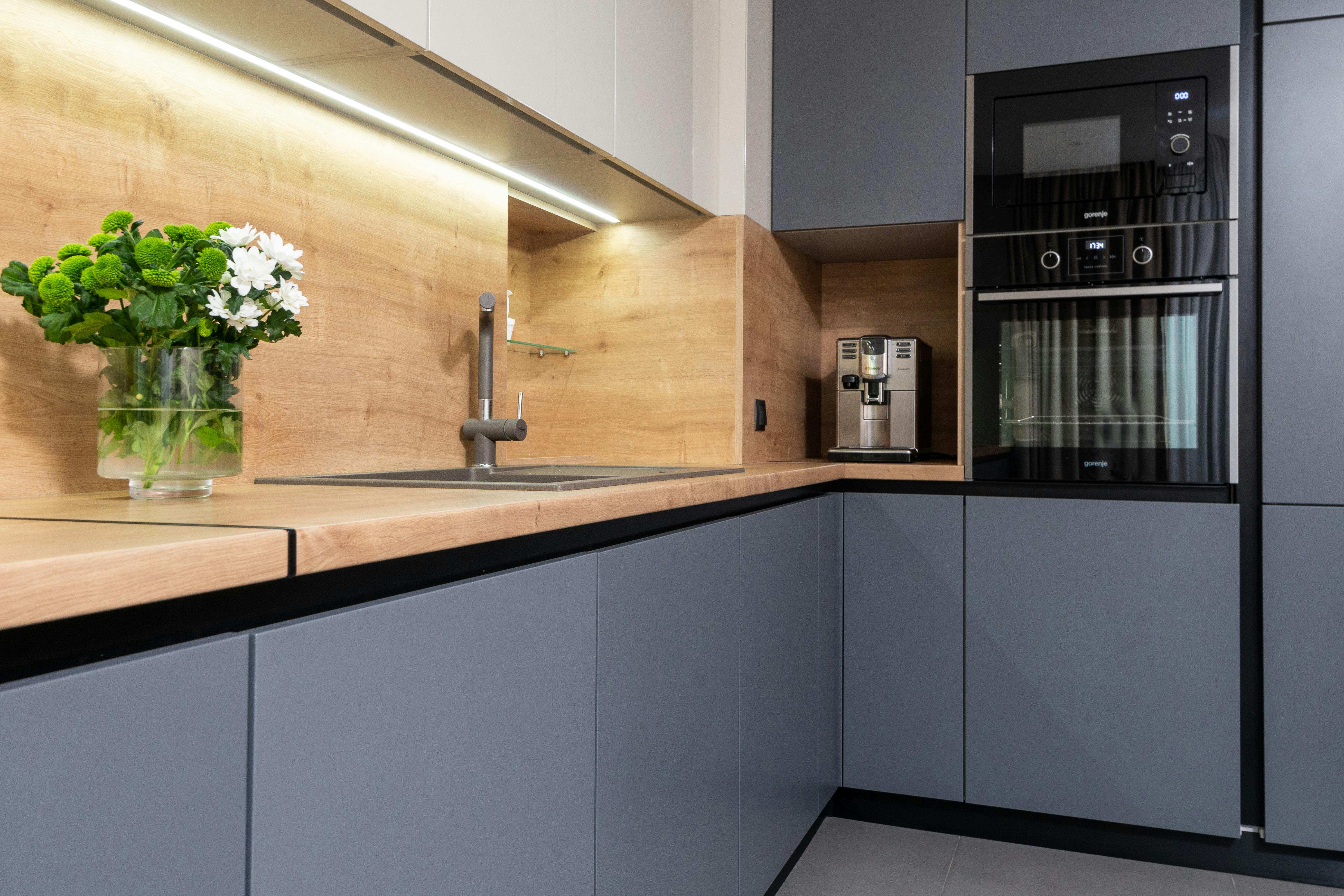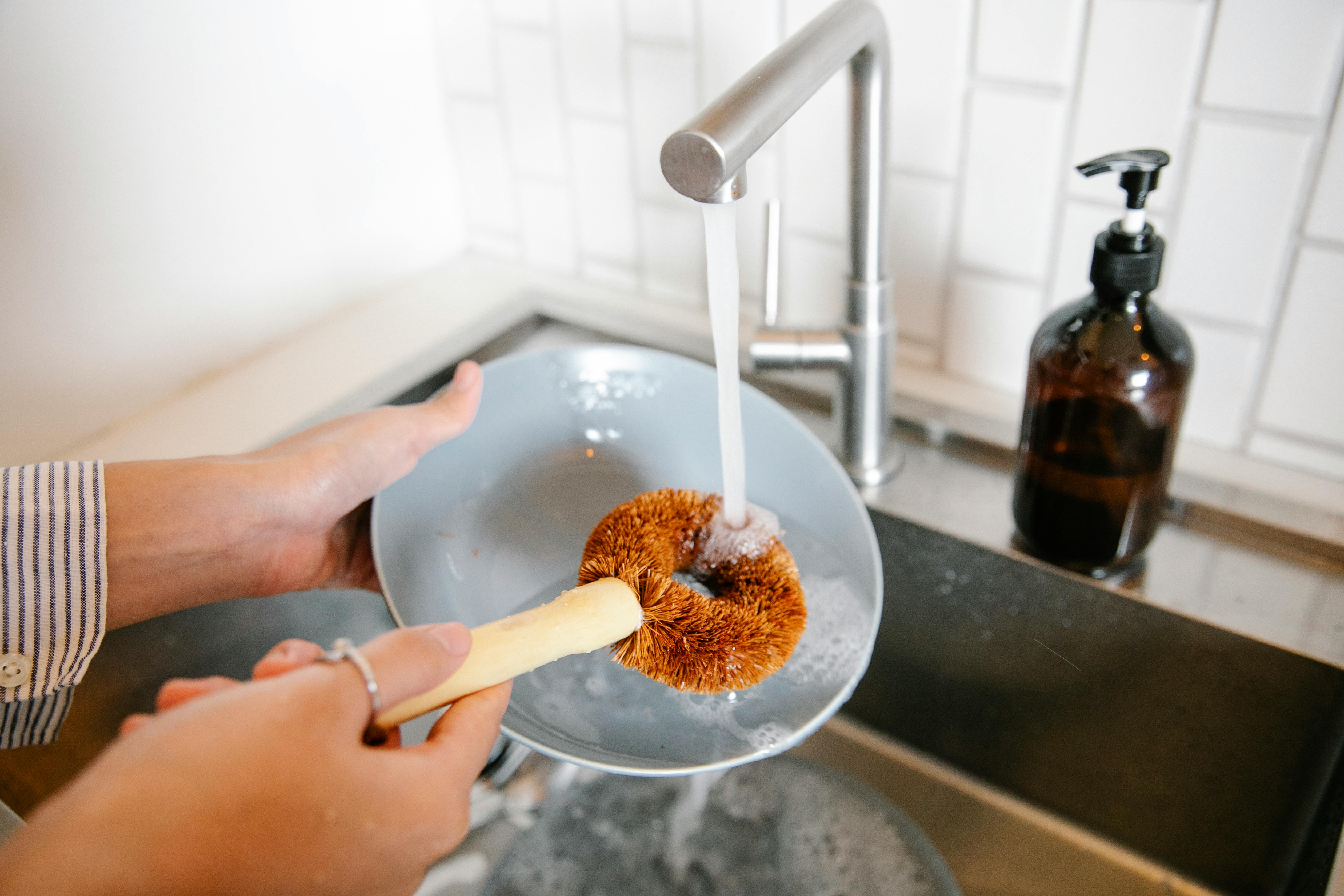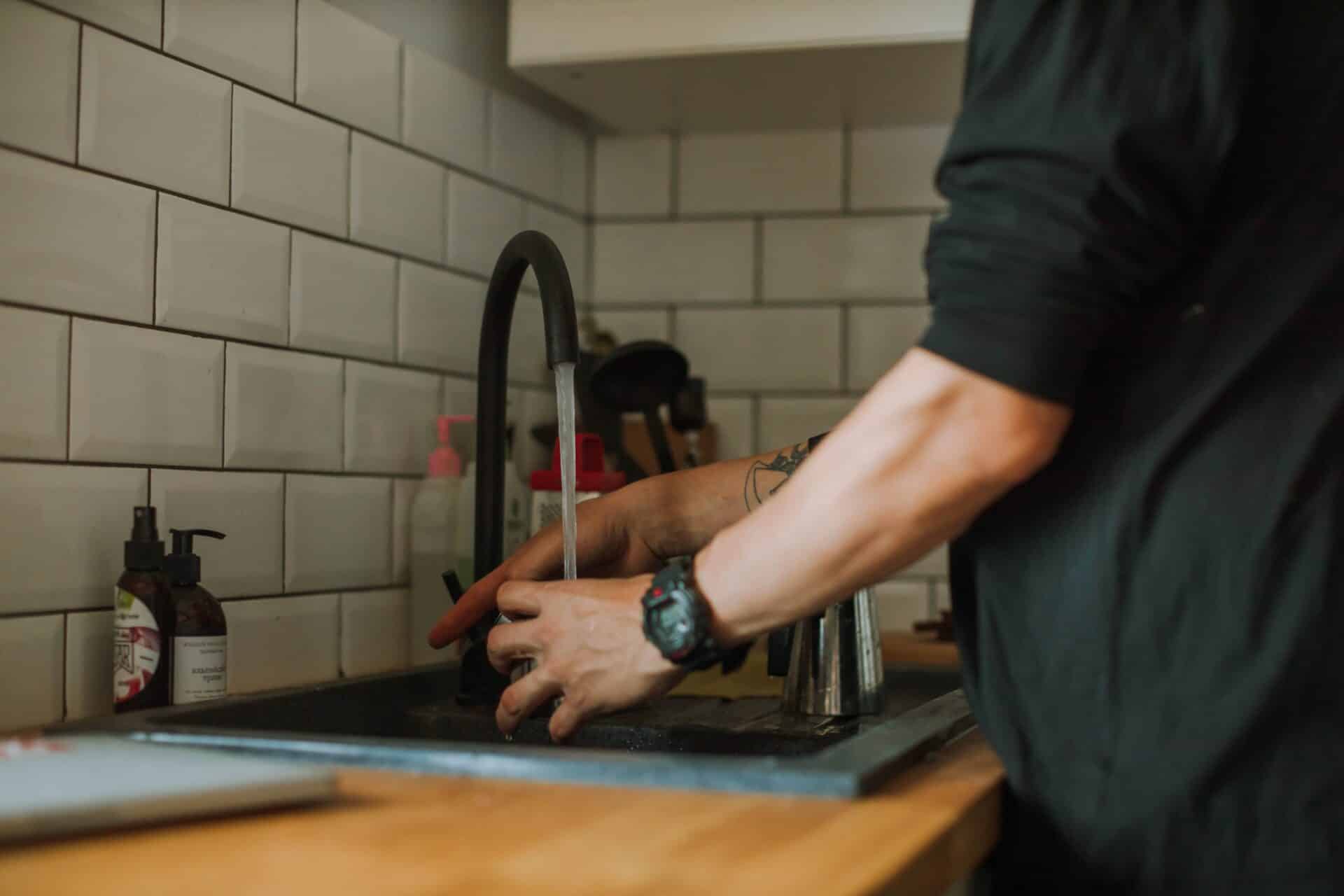If you find water damage under your kitchen sink, it is important to take the necessary steps to address it quickly and effectively. Water damage can lead to a number of serious problems if not addressed in a timely manner. This article will provide step-by-step instructions on how to repair water damage under the kitchen sink. By following these steps, you can help ensure that your kitchen remains safe and free from any further water damage.The causes of water damage under a kitchen sink can vary, but the most common causes are leaking pipes, clogged drains, and improper installation. Leaking pipes can be caused by corrosion, a crack in the pipe, or a loose connection between two pieces of pipe. Clogged drains can be caused by food debris or other objects blocking the water flow in the drain. Improper installation can lead to water not draining properly and eventually causing damage to the area underneath the kitchen sink.
Signs of Water Damage Under Kitchen Sink
Water damage can cause serious problems in your kitchen, and one of the first places to check for water damage is under your kitchen sink. If you notice any of these signs of water damage under your kitchen sink, you should take action as soon as possible to repair the leak and prevent further damage.
One sign of water damage under the kitchen sink is discoloration on the walls or ceiling. This can be caused by water seeping through tiny cracks in the wall or ceiling, or even from a leaking pipe. You may also notice signs of mold growth in this area, as mold loves damp areas and can quickly spread if not addressed.
Another sign that there may be water damage under your kitchen sink is warping or buckling in the floorboards. Warped wood is a result of moisture and can signal that there is a leak somewhere which needs to be addressed.
You may also notice an unpleasant smell coming from beneath your kitchen sink, which could indicate a buildup of bacteria due to excess moisture. If left unchecked, this could lead to more serious issues such as structural damage and even health problems if you are exposed to too much moisture for too long.
Finally, if you hear a dripping sound coming from beneath your sink or find puddles of water on the floor around the area, it could indicate that there is a leak somewhere which needs to be fixed immediately. A leaking pipe can quickly cause major problems if not addressed right away, so make sure to get it checked out by a professional as soon as possible if you notice any signs of a leak under your kitchen sink.
Taking action quickly when you notice any signs of water damage under your kitchen sink is key in preventing further issues and keeping your home safe and dry. Make sure to keep an eye out for any potential leaks and address them promptly so that you can avoid serious problems down the line!
Types of Equipment Needed for Repairing Water Damage Under Kitchen Sink
When water damage occurs under the kitchen sink, it’s important to take immediate action. To do this, you will need some basic tools and equipment to repair the damage. These essential items include gloves, a utility knife, a bucket, a scrub brush, towels, a wet vacuum cleaner, and absorbent materials like sponges and rags.
Gloves are necessary for keeping hands clean and safe from harmful bacteria during the repair process. A utility knife is also useful for cutting away old materials that may be damaged or worn out. A bucket can be used to hold tools and materials while working on the repairs. A scrub brush is also needed to remove debris and dirt from the affected area before starting repairs.
Towels are essential for absorbing excess water from the area after cleaning up any spills or leaks. A wet vacuum cleaner is also important for extracting any standing water that may remain after cleaning up spills or leaks. Finally, absorbent materials like sponges and rags can help remove remaining moisture from the area in order to prevent further water damage.
Having these essential items on hand is key to tackling water damage under the kitchen sink quickly and efficiently. With these items at your disposal, you can repair minor water damage before it has a chance to become worse and costlier to fix down the road.
Step 1: Determine the Source of the Leak
The first step to take when cleaning up water damage from under your kitchen sink is to determine the source of the leak. If there is a broken pipe, you will need to replace it before any other steps can be taken. If there is no visible cause of the leak, you may need to call a plumber for further assistance.
Step 2: Remove Any Standing Water
Once you have determined the source of the leak, it’s time to remove any standing water from under your kitchen sink. You can use a wet-dry vacuum or mop and bucket to do this. Make sure to wear protective gloves and goggles while doing this as the water may contain contaminants that could be hazardous to your health.
Step 3: Disinfect Surfaces
Once all of the standing water has been removed, it’s time to disinfect any surfaces that may have been affected by the water damage. You can use a mixture of bleach and water or a commercial disinfectant cleaner to do this. Make sure all surfaces are completely dry before proceeding with any other steps in order to prevent further contamination.
Step 4: Replace Damaged Materials
If there were materials such as insulation, carpeting, or drywall that were damaged by the water, you will need to replace them as soon as possible. Make sure to wear protective gear such as gloves and goggles while doing this in order to prevent contamination from mold or bacteria that may have grown due to the moisture present in these materials.
Step 5: Dry Out Area Thoroughly
Finally, you will need to dry out the area thoroughly in order to prevent mold growth and other issues caused by moisture that has been left behind due to water damage. You can use fans and dehumidifiers in order speed up this process and make sure all areas are completely dry before putting everything back together again.
Dry Out the Damaged Area
If your wooden cabinets have been damaged by water, the first step in repairing them is to dry out the affected area. Begin by removing any wet items from inside the cabinet, then wipe down all surfaces with a dry cloth. If there is standing water in the cabinet, use a shop vacuum to suck it up. Place fans and dehumidifiers within the cabinet area to help speed up the drying process. Make sure to open all doors and drawers, as well as any windows or vents in the room, so that air can freely circulate throughout. Once everything is dry, inspect for mold or mildew growth and treat as necessary.
Repair Any Structural Damage
If your cabinets have sustained structural damage due to water exposure, this will need to be addressed before you can move on with other repairs. You may need to replace sections of wood that have been warped or cracked due to water exposure. If you are not confident in your ability to do this yourself, you may want to consult a professional carpenter for help.
Strip and Sand Down Cabinets
Once any structural damage has been repaired, it’s time to start preparing the surface of your cabinets for refinishing. Begin by stripping off any existing finishes or coatings using a chemical stripper followed by sanding down all exposed wood surfaces. Use a medium-grit sandpaper for best results and make sure to get into all of those hard-to-reach corners and crevices.
Apply New Finish
Now that you have prepped your cabinets’ surfaces, it’s time for the fun part: applying a new finish! Choose from a variety of finishes such as paint or lacquer depending on your desired look and follow the manufacturer’s instructions carefully when applying it. Make sure to allow plenty of drying time between coats before moving on with other repairs.
Replace Any Hardware
If you find that some of your cabinets’ hardware has been damaged due to water exposure, now is the time to replace it. Choose hardware that matches both your style preferences and existing décor and make sure it will fit properly before purchasing it. Once you have installed your new hardware, give everything one last inspection before sitting back and admiring your handiwork!

Checking the Pipes
It is important to check the pipes under your kitchen sink regularly. This will help you identify any leaks or blockages that may have developed over time. To check your pipes, start by turning off the water supply at the main shutoff valve. Then, locate the access panel underneath your sink and remove it. This will give you access to all of the pipes beneath your sink. Inspect each one carefully for signs of rust, corrosion, or damage. If you find any, it is best to replace them as soon as possible.
Replacing Pipes
If you need to replace a pipe, be sure to turn off the water supply before beginning work. You will also need a few tools for this project including a pipe wrench, a hacksaw, and some plumber’s tape. Start by loosening the connections at both ends of the pipe using your pipe wrench. Then cut through it with your hacksaw and remove it from beneath the sink. Next, measure and cut a new piece of pipe to fit in its place using your hacksaw once again. Finally, apply plumber’s tape around both ends of the new pipe before connecting it back into place with your wrench.
Once all of the connections are secure, turn on the water supply and check for any leaks around each joint. If everything looks good, then you have successfully replaced a pipe beneath your kitchen sink!
How to Fix Leaky Faucets
Fixing a leaky faucet can be relatively easy and a great way to save money on water bills. Before attempting any repairs, it’s important to first identify the type of faucet you are dealing with. It can be helpful to take a photo of the faucet before beginning repairs in order to have a reference point. Once the type of faucet is identified, it’s time to gather the necessary tools and supplies. A set of adjustable pliers, a basin wrench, and replacement parts should suffice for most repair jobs.
The first step is to turn off the water supply so that no more water can escape. This can be done by turning off the shutoff valves located underneath the sink or by shutting off the main water supply valve in your home. Once this is done, you can open the faucet completely and allow any remaining water trapped in the pipes to drain out before beginning repairs.
After this has been completed, it’s time to disassemble the parts of the faucet in order to gain access to what is causing the leak. This will usually involve removing screws or bolts from underneath the sink or around the base of the faucet itself. It’s important to keep track of which screws go where so that they can be reassembled correctly once repairs are made.
Once all of the parts are removed, check for worn-out gaskets or washers and replace them as needed with new ones purchased from a plumbing supply store or home improvement center. If all else fails, it may be necessary to replace entire sections of piping or fixtures depending on how extensive damage has become over time due to leaking water.
Finally, after all parts have been replaced or repaired as needed, reassemble everything back together again and turn on your main water supply in order for your newly repaired faucet to work properly once more!
How To Fix Damaged Pipes
If you are dealing with damaged pipes in your home, then it’s important that you take immediate action in order to prevent further damage from occurring as well as mitigate any potential health risks associated with contaminated drinking water supplies due to pipe breaks or leaks. The first step is determining what type of pipe you are dealing with such as copper, PVC, galvanized steel etc., as this will help you determine how best approach making repairs.
Once this has been determined, turn off your main water supply valve located near where your main incoming pipe enters into your home so that no more water escapes while making repairs. Next up is accessing where damage has occurred which may involve removing drywall if pipes are located within walls or ceilings spaces in order for proper access points for repair work. Depending on what type of material is used for piping and where damage has occurred will determine how best proceed with repairs; if possible patching up holes using epoxy putty may suffice if damage isn’t too extensive otherwise replacing entire sections may be necessary if multiple breaks have occurred along pipes lengthwise or its condition has become too deteriorated over time due its age etc..
After patching up holes using epoxy putty (or replacing sections) make sure all connections between pipes are secure and airtight by using plumbing tape along edges followed by coating areas with liquid sealant purchased from a local hardware store for extra protection against future leaks occurring again due corrosion etc.. Finally turn back on main water supply valve slowly at first in order ensure everything works properly before returning back full pressure levels within system; also pay attention during initial startup period for any potential leaks developing due improper sealing between connections etc.. If any further issues arise then its best call professional plumber immediately address them accordingly!
What to Look for When Inspecting the Drainage System for Damage
When inspecting a drainage system for damage, it is important to look for any signs of wear and tear or potential blockages. This includes checking the pipes, drains, and fixtures for any leaks or blockages. It is also important to check any surrounding areas, such as surrounding gardens or basements, for any potential sources of water damage.
It is also important to check any drain covers or other devices that may be used to keep debris from entering the drainage system. If these are not functioning properly or appear damaged, they could be allowing debris into the drainage system and causing potential issues down the line.
Additionally, it is important to ensure that all fittings are in good condition and securely fastened. Loose fittings can cause water to escape from the drainage system which may lead to flooding or other problems. All drain pipes should also be checked for any signs of corrosion or damage that could be causing a blockage in the system.
Finally, it is essential to inspect all pumps and valves associated with a drainage system. These components should be in good working order in order to ensure proper water flow through the system without any issues. If an issue does arise with these components, it is important to address them quickly in order to avoid further damage occurring within the drainage system.

Conclusion
Repairing water damage under your kitchen sink can be a daunting task, but with the right tools and knowledge you can tackle this job with ease. First, inspect the damaged area and determine the severity of the damage. If it is minor, then you can start by cleaning any debris and dirt from the affected area. If the damage is more severe, then you may need to replace the pipes or even the entire cabinet. Additionally, make sure to check for any mold or mildew that may have grown due to moisture buildup.
Once all repairs are made, make sure to clean up any excess moisture that may have accumulated in order to prevent further water damage in the future. Finally, if your sink has been leaking for a long time without being fixed then it is important to call a professional plumber in order to ensure that no further damage is done. With these tips, you can easily repair water damage under your kitchen sink and keep it looking great for years to come!

